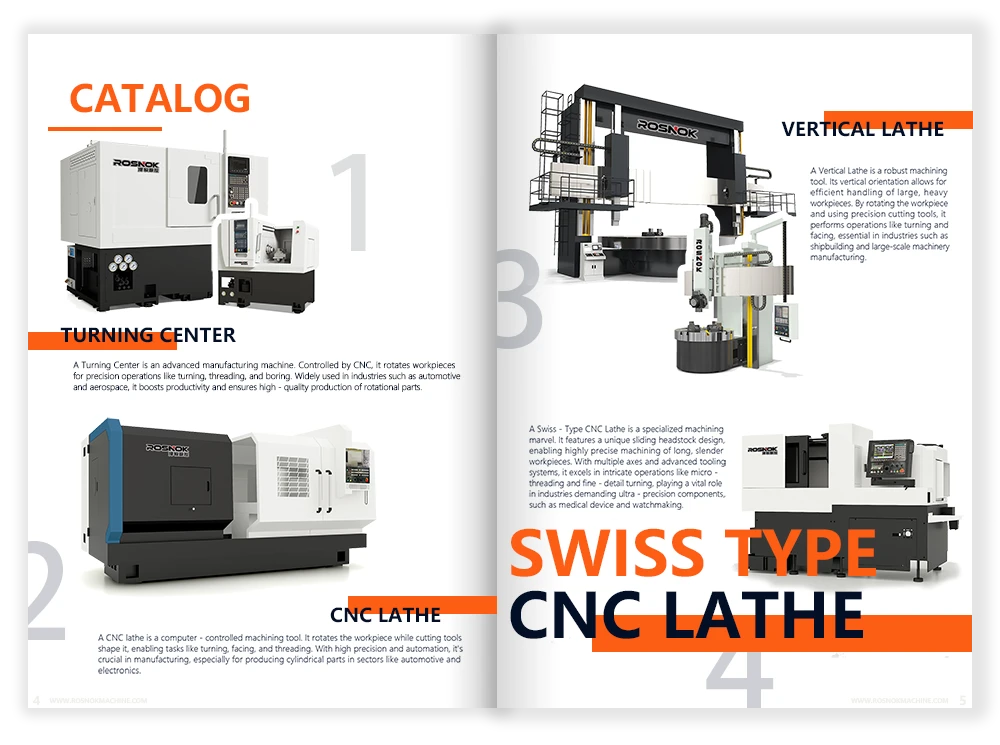Have you ever wanted to learn how to use a lathe, but felt overwhelmed the moment you stood in front of one? Have you worried about the part slipping, the tool snapping, or not knowing which knob does what? For beginners, even starting the machine can feel like a risk.
To use a lathe, start by securing the workpiece tightly in the chuck. Select the right cutting tool and adjust the spindle speed based on the material type. Use the carriage to bring the tool close, then feed it slowly into the rotating workpiece. Always follow safety procedures, wear proper protection, and stay alert. With a steady hand and correct technique, you’ll be able to perform accurate machining on different workpieces. Even beginners can master the lathe by learning each step carefully.
Keep reading to learn key lathe components, basic lathe operations, safety tips, tool selection, and how to use different types of lathes for accurate, safe, and efficient machining.
What Is a Lathe and What Can It Do
A lathe is a fundamental machine tool used across woodworking, metalworking, and many other material shaping processes. It operates by spinning the workpiece around a central axis while a cutting tool moves in a straight line, either along or across the rotation.
Lathes are used to perform a variety of machining tasks. Common operations include turning the outer diameter of shafts, facing the ends of round parts, boring internal holes, and cutting screw threads. These actions allow you to produce cylindrical shapes, flat surfaces, concentric bores, and precision threads with a high degree of control. Because of this versatility, lathes are widely used in fields like metalworking, woodworking, and prototyping.

Whether you’re learning how to use a lathe for woodworking, metalworking, or hobby fabrication, the core principle remains the same: rotate the part, feed the tool, remove material.
Lathes come in many variations and sizes, but the basic structure and purpose are consistent. Even manual bench-top lathes follow the same logic as advanced CNC models. This makes it easier for beginners to start with simple operations and build their skills over time, especially when learning how to use lathe tools to create precise and repeatable results.
Key Lathe Components and Their Functions
Understanding the main parts of a lathe is essential before you begin using one. Each component has a specific purpose, and knowing how these elements work together helps beginners operate a lathe more confidently and safely.
Bed
The bed is the base of the lathe. It supports the entire machine structure and keeps everything aligned. Made from heavy cast iron or steel, the bed absorbs vibration and ensures stability during machining. A flat and rigid bed is critical for achieving accuracy, especially when turning longer workpieces.

Headstock and Spindle
The headstock is mounted at one end of the lathe bed and houses the spindle. The spindle is the rotating shaft that holds and spins the workpiece. Power from the motor is transferred to the spindle to drive rotation. The accuracy of the spindle is important because even small misalignments can affect the final result. Whether you’re learning how to use a lathe machine manually or exploring advanced features on a CNC model, this is the heart of the machine.

Chuck and Workholding
The chuck is the device attached to the spindle that grips the workpiece. It comes in different types, including three-jaw chucks for round parts and four-jaw chucks for irregular shapes. Other holding methods include faceplates, collets, and centers. Proper workholding is critical in any setup. When you use a lathe, making sure the workpiece is secured correctly prevents dangerous slippage and ensures consistent results.

Carriage and Tool Post
The carriage holds and moves the cutting tool. It travels along the bed and allows the tool to move precisely toward or along the workpiece. The tool post is mounted on top of the carriage and holds the cutting tool in place. Knowing how to use lathe tools properly begins here, as the movement of the carriage and tool post directly controls how the tool engages with the spinning material.

Tailstock
The tailstock is located opposite the headstock. It can slide along the bed and be locked in place when needed. The tailstock supports long workpieces using a center point or can hold a drill chuck for boring operations. For beginners learning how to use a lathe, especially on longer shafts, the tailstock is essential for maintaining alignment and avoiding deflection.

Lead Screw and Feed Rod
These components are responsible for the controlled movement of the carriage during automatic operations. The lead screw is mainly used for cutting threads, while the feed rod is used for general tool movement. These systems ensure smooth and consistent motion when using a manual lathe or when automating movements on certain machines. Understanding their role is part of mastering how to use a lathe step by step.

Step-by-Step Guide: How to Use a Lathe for the First Time
Learning how to use a lathe for the first time can feel overwhelming, but following a clear step-by-step process makes it safe and manageable. This section outlines each major step you should take before, during, and after using a lathe. Whether you’re using a manual or CNC lathe, the basic preparation and handling steps are very similar.
Step 1 – Inspect and Prepare the Machine
Before starting any operation, inspect the lathe carefully. Make sure the power is off and the emergency stop switch is functional. Check the lubrication levels for the spindle and guideways. Clean off any dust, chips, or oil from the bed and control panel. A clean, well-maintained lathe reduces the chance of errors and ensures better results. Never skip this step, especially when learning how to use a lathe step by step.
Step 2 – Mount the Workpiece Correctly
Secure the workpiece using the appropriate chuck or faceplate. Make sure it is centered and tightly clamped. For long or heavy workpieces, use a tailstock or steady rest for support. Improper mounting is a common cause of vibration, tool breakage, or uneven cuts. Knowing how to use a lathe safely begins with proper workholding.
Step 3 – Choose and Install the Right Cutting Tool
Different operations require different tools. Use a turning tool for outside diameters, a facing tool for end surfaces, or a threading tool for cutting screw threads. Install the tool into the tool post and align it at the correct height—usually at the center of the workpiece. Understanding how to use lathe tools is essential for producing accurate results and avoiding tool damage.
Step 4 – Set the Correct Speed and Feed Rate
The spindle speed and feed rate depend on the material and the type of operation. Softer materials like wood use higher speeds, while harder metals require slower speeds. Most lathes have a speed chart as a reference. Set the feed rate to allow a smooth, consistent cut without overloading the tool. These settings are especially important if you’re learning how to use a manual lathe or switching between different materials.

Step 5 – Start Machining with Control and Focus
Turn on the machine and observe the workpiece. Bring the cutting tool slowly into contact with the surface. Apply light pressure and move the tool steadily, either manually or using automatic feed. Always keep your hands clear of moving parts and avoid sudden movements. To use a lathe properly, your focus should be on consistent tool movement and safe control of the machine.
Step 6 – Monitor the Process and Finish Safely
Watch the surface finish and listen for unusual sounds. Stop the machine if the tool becomes dull or if excessive chatter occurs. After finishing the cut, retract the tool, stop the spindle, and allow it to come to a complete stop before measuring or removing the part. Clean the machine and work area once you’re done. Learning how to use a lathe safely also means understanding when to stop and check your setup.
Lathe Safety Guidelines Every Beginner Must Follow
Using a lathe involves rotating parts, sharp tools, and high-speed movement—all of which can lead to accidents if basic safety rules are ignored. For anyone learning how to use a lathe, understanding and following safety protocols is just as important as learning the machining process itself. Here are key safety principles every beginner should follow from the moment they step up to a lathe.
Wear proper protective gear
Always wear safety goggles to protect your eyes from flying chips. Avoid loose clothing, gloves, and long sleeves, as they can get caught in rotating parts. Tie back long hair and remove any jewelry before operating the machine.
Check your environment
Make sure the floor around the lathe is dry and clear of clutter. Good lighting is essential. Keep a fire extinguisher nearby, especially when working with flammable materials or cutting fluids. Never operate a lathe in a distracted or fatigued state.
Secure everything before turning on the machine
Double-check that the workpiece is clamped properly and the cutting tool is tight in the holder. Ensure the chuck key is removed from the chuck before starting. This step is critical whether you’re learning how to use a manual lathe or experimenting with a more advanced setup.
Stand in a safe position
Do not stand directly in line with the rotating workpiece. Chips or broken tool pieces may be thrown outward. Stand slightly to the side when starting the machine and always keep a safe distance from moving components.
Stay focused during operation
Never leave the lathe running unattended. Pay close attention to the sound of the machine, as changes may indicate tool wear or problems with the setup. Using a lathe requires constant awareness of speed, feed rate, and material behavior to prevent unexpected issues.
Know how to stop the machine quickly
Familiarize yourself with the emergency stop button or power shutoff switch. In any situation where you feel unsure or detect something unusual, stop the machine immediately and inspect the setup. Learning how to use a lathe includes knowing how to stop it at the right time.
Clean up properly after use
Once the machine is powered down and the spindle has completely stopped, clear away chips using a brush—not your hands. Wipe down the bed and tool area, and apply light oil to prevent rust. A clean lathe is not only safer but also lasts longer.
Understand common risks
New users often ask if they can use a metal lathe for wood, or a wood lathe for metal. While technically possible, it’s not recommended due to differences in speed, structure, and rigidity. Choosing the right type of lathe for the job is part of staying safe and getting good results.
Following these safety guidelines is a non-negotiable part of how to use a lathe safely. Accidents often happen when users rush, skip checks, or try shortcuts. With proper habits from the start, even beginners can machine confidently without unnecessary risk.

Different Types of Lathes and Their Practical Uses
Not all lathes are built the same. Depending on the materials, part size, and production needs, different types of lathes are used across industries. For anyone learning how to use a lathe, it’s important to know which machine fits your task. Below are the most common types of lathes and where each is typically used.
Engine Lathe(Manual Lathe)
The engine lathe is the most traditional and versatile type of lathe. It is often used in training workshops and general-purpose machine shops. This manually controlled lathe is perfect for beginners who want to understand the basic mechanics of turning operations. With proper setup and tooling, it can perform turning, facing, threading, and drilling. If you’re learning how to use a manual lathe, this is usually where you start.

CNC Lathe
CNC (Computer Numerical Control) lathes are designed for precision and automation. Instead of controlling movement by hand, operators input a program that controls the spindle speed, feed rate, and tool path. CNC lathes are widely used in mass production and for creating complex geometries that are difficult to achieve manually. Learning how to use a CNC lathe involves understanding G-code programming, tool offsets, and digital part modeling. While it has a steeper learning curve, it offers unmatched consistency and speed.

Pipe Threading Lathe
A pipe threading lathe is built specifically for machining large-diameter pipes and cutting precise threads on their ends. These machines are used in industries like oil and gas, where threaded pipe connections must meet tight tolerances. The bed is reinforced for heavy parts, and the chuck is larger than standard engine lathes. If you plan to use a lathe for threading pipe or heavy cylindrical components, this is the ideal option.

Vertical Lathe
Unlike horizontal lathes, a vertical lathe has its spindle mounted vertically. The workpiece is clamped on a rotating table below the cutting tool. This design is perfect for large, heavy, and flat parts like brake discs, flywheels, or wind turbine hubs. Vertical lathes are commonly found in shipbuilding, aerospace, and power generation industries. Though not common in small workshops, understanding how to use a vertical lathe is valuable in industrial applications.

Swiss-Type Lathe
A Swiss-type lathe is designed for extremely small and precise parts. It features a sliding headstock and a guide bushing that provides support very close to the cutting area. These machines are ideal for high-precision manufacturing in medical, electronics, and watchmaking industries. If you’re wondering whether you can use a metal lathe for wood or vice versa, the answer depends on accuracy and rigidity—but for ultra-fine detail, a Swiss lathe is unmatched. It is especially useful when learning how to use a metal lathe for tiny components.

Turning Center
A turning center is an advanced CNC lathe capable of performing multiple operations like turning, milling, and drilling in a single setup. These machines often feature automatic tool changers and multi-axis control, making them ideal for complex, high-precision parts. Used widely in aerospace, automotive, and medical industries, turning centers help reduce cycle time and improve accuracy. While not beginner-friendly due to their complexity and cost, they represent a powerful step forward for those looking to go beyond basic how to use a CNC lathe skills.

Tools and Accessories You’ll Need to Get Started
Using a lathe safely and effectively requires more than just the machine itself. For beginners learning how to use a lathe, having the right tools and accessories is critical to success. Below is a list of essential items, each playing a specific role in the turning process.
Cutting Tools
These are the tools that actually shape the workpiece. Common types include turning tools, parting tools, facing tools, and threading tools. Beginners should start with high-speed steel (HSS) tools, which are easier to sharpen and more forgiving than carbide inserts. When choosing cutting tools, match the tool type to the material and the job you want to do.
Chuck and Collets
The chuck holds the workpiece in place. A three-jaw chuck is ideal for round parts, while a four-jaw chuck allows more flexibility for irregular shapes. For smaller or precision parts, collets offer excellent centering accuracy. Make sure the chuck size matches your lathe, and never overlook the importance of proper workholding when you use a lathe.
Centers and Live Centers
Centers are used to support long workpieces between the headstock and tailstock. A live center rotates with the part, reducing friction. This is especially helpful when turning long metal shafts or wooden spindles. For anyone learning how to use a metal lathe or wood lathe, selecting the right center can make a big difference in accuracy and finish.
Measuring Tools
Precision depends on accurate measurement. You’ll need a caliper for general sizing, a micrometer for fine measurement, and a dial indicator for alignment. Even for beginners, understanding how to measure and verify dimensions is part of learning how to use lathe tools correctly.
Lubricants and Coolants
Lubrication reduces friction and helps extend tool life. Use oil on the bedways and bearings, and coolant or cutting fluid during machining—especially on metals. For woodturning, lubrication is less critical, but a clean tool and steady hand are still key. Choose oils and fluids recommended for your specific lathe type.
Tool Post and Holders
The tool post is the mount that holds your cutting tools. Quick-change tool posts allow you to swap tools faster and maintain consistent alignment. For beginners, a basic tool post with solid clamping ability is often enough. Ensure that your holder fits both your tool shank size and lathe carriage setup.
Safety Accessories
Always wear safety glasses and keep a chip brush nearby to clean the lathe without using your hands. A face shield is recommended when working with large or fast-spinning workpieces. Don’t forget to have a proper work light and emergency stop button in easy reach.
Having the right accessories is part of mastering how to use a lathe. Good tools not only make the job easier, they also improve safety, accuracy, and confidence—especially in the early stages of learning.

Common Mistakes Beginners Should Avoid
When learning how to use a lathe, it’s easy to make small mistakes that lead to poor results—or even dangerous situations. Below are ten of the most common errors beginners make, along with practical tips to help you avoid them from the start.
1. Forgetting to Remove the Chuck Key
Leaving the chuck key in place before starting the lathe can cause it to fly out at high speed. Always remove it immediately after tightening the chuck.
2. Setting the Wrong Spindle Speed
Each material and operation requires a different speed. Running too fast may damage the workpiece or tool; too slow can cause poor finish. Refer to a speed chart or manufacturer guidelines to set it correctly.
3. Failing to Tighten the Workpiece Securely
An unsecured part can shift or fly off during cutting. Make sure the workpiece is properly centered and clamped using the right chuck or fixture before you use a lathe.
4. Using the Wrong Cutting Tool
Using a facing tool to turn the diameter or a threading tool to make a groove leads to inaccurate results and tool wear. Learn the purpose of each tool when studying how to use lathe tools effectively.
5. Advancing the Tool Too Aggressively
Feeding too fast or taking a deep cut can cause tool chatter, broken inserts, or poor surface finish. Start with light passes and increase depth gradually.

6. Ignoring Tool Height Alignment
If the cutting edge is not aligned with the center of the workpiece, you’ll get uneven cuts and extra friction. Use a center gauge or spacer to set the correct tool height.
7. Not Checking for Tool Wear
Dull tools increase cutting force and heat, leading to poor accuracy and finish. Inspect tools regularly and replace or sharpen them as needed.
8. Improper Use of Tailstock Support
Failing to support long workpieces with a live center can lead to deflection or vibration. Use the tailstock correctly, especially when learning how to use a manual lathe with long shafts.
9. Measuring While the Lathe Is Running
Never try to check dimensions or touch the workpiece while the machine is spinning. Always stop the spindle before making any contact.
10. Skipping Cleanup After Use
Leaving chips, dust, or oil on the lathe can cause corrosion or mechanical issues. Wipe the machine clean and apply oil after each session. This is part of good practice when learning how to use a lathe step by step.
Avoiding these mistakes early on helps build good habits and improves safety. Even experienced machinists revisit these basics to stay sharp. As you continue to learn how to use a lathe, keeping these in mind will make your progress smoother and your results more consistent.

Summary Table: Comparing Lathe Types at a Glance
| Lathe Type | Structure Features | Ideal For | Typical Applications | Ease of Use |
|---|---|---|---|---|
| Engine Lathe (Manual) | Manual controls, horizontal spindle | Beginners, hobbyists, general machining | Turning, facing, threading small batches | Easy (best for learning) |
| CNC Lathe | Automated, programmable with CNC interface | Mass production, precision components | Automated part production, high repeatability | Moderate to complex |
| Pipe Threading Lathe | Heavy-duty bed, large chuck, pipe threading | Oil & gas, plumbing, industrial threading | Threading pipes, large cylindrical parts | Moderate (requires setup knowledge) |
| Vertical Lathe | Vertical spindle, rotating base table | Heavy, flat parts (e.g., turbines, discs) | Machining large brake discs, flywheels | Challenging (industrial use only) |
| Swiss-Type Lathe | Sliding headstock, guide bushing | Medical, electronics, micro parts | Watch components, surgical tools | Advanced (requires precision skill) |
| Turning Center | Multi-axis, tool changer, milling + turning combo | Complex, high-precision multi-process parts | Aerospace, automotive, complete in one setup | Advanced (requires CNC experience) |
Conclusion: Master the Basics and Start Turning
Learning how to use a lathe is about more than just turning on the machine—it’s about understanding the entire process. From identifying key components to following safe operating steps, choosing the right tools, and recognizing different lathe types, you’ve now got a complete roadmap to begin turning with purpose. Whether you’re shaping wood, metal, or composite materials, building a strong foundation in technique and awareness is the key to consistent results.
As you continue your journey, the quality of your equipment becomes just as important as your skills. That’s why choosing a reliable machine tool manufacturer can make all the difference. At Rosnok, we offer a wide range of CNC and manual lathes—engineered to support everything from first-time users to high-volume production. If you’re ready to turn knowledge into real work, start with tools built to last and evolve with your needs.

FAQ
What is the easiest material to practice turning on a lathe?
Aluminum is the easiest material for beginners to start with. It is soft, cuts cleanly, and generates less heat and tool wear. Brass is also beginner-friendly due to its stable cutting behavior and low risk of chatter.
Can I use the same cutting tool for different operations?
No. Each operation—like facing, turning, threading, or parting—requires a specific tool shape and geometry. Using the wrong tool can result in poor surface finish, tool breakage, or inaccurate dimensions.
Do I need to align the tailstock every time I use it?
Yes, if precision is required. Misalignment can lead to tapering, vibration, or tool deflection during drilling or turning. Regular tailstock alignment ensures accuracy and prolongs tool and machine life.
What is the ideal speed for turning different materials on a lathe?
The ideal spindle speed depends on the material’s hardness and diameter. Softer materials like aluminum typically require higher speeds (800–1,200 RPM), while harder metals like steel need slower speeds (300–600 RPM). Use the formula:
RPM = (Cutting Speed × 1000) / (π × Diameter)
Always adjust for safety and tool longevity. Over-speeding can damage both the tool and the workpiece.
Do I need to center-drill my workpiece before mounting it on the lathe?
Yes, especially for long or shaft-type workpieces. Center-drilling ensures proper alignment with the tailstock and reduces the risk of wobbling. This is crucial for maintaining precision and preventing chatter or uneven cuts. It also extends the lifespan of your cutting tools and ensures consistent part geometry during production.
How do I check if the workpiece is mounted concentrically?
Use a dial indicator against the surface of the workpiece while slowly rotating the spindle by hand. If the indicator needle moves significantly, the part is off-center. Re-adjust the chuck until the needle barely moves. This ensures accurate turning and reduces vibration or runout.






